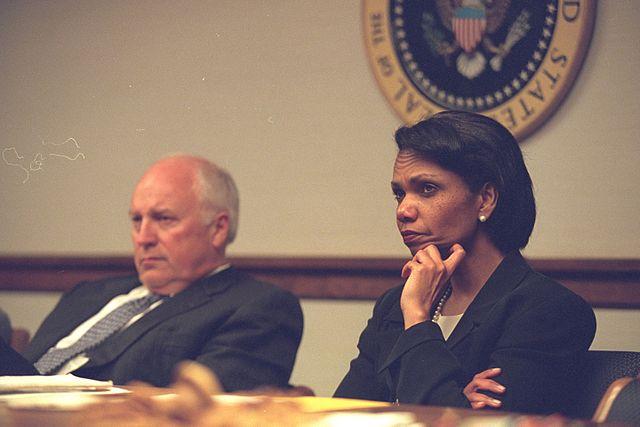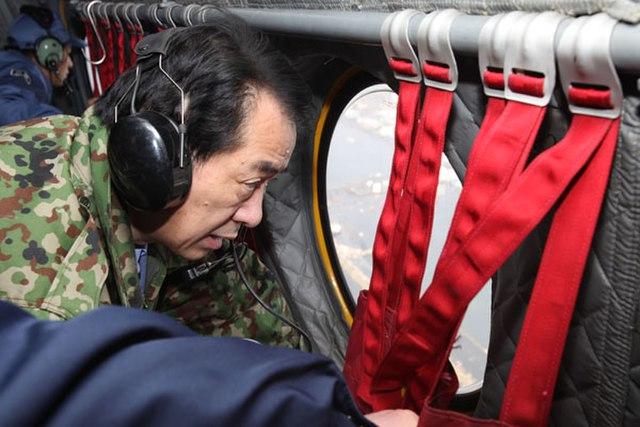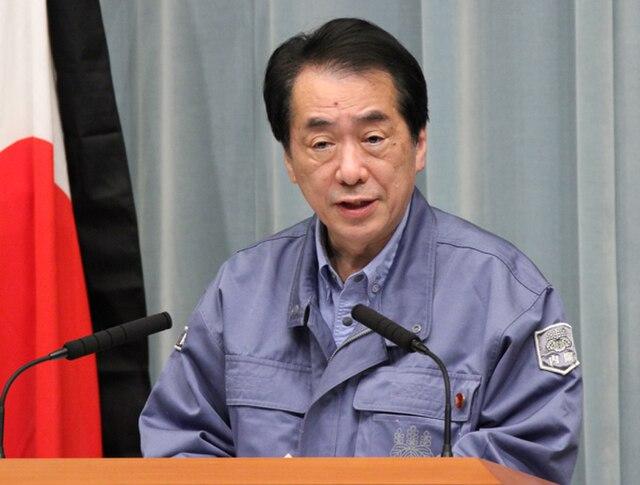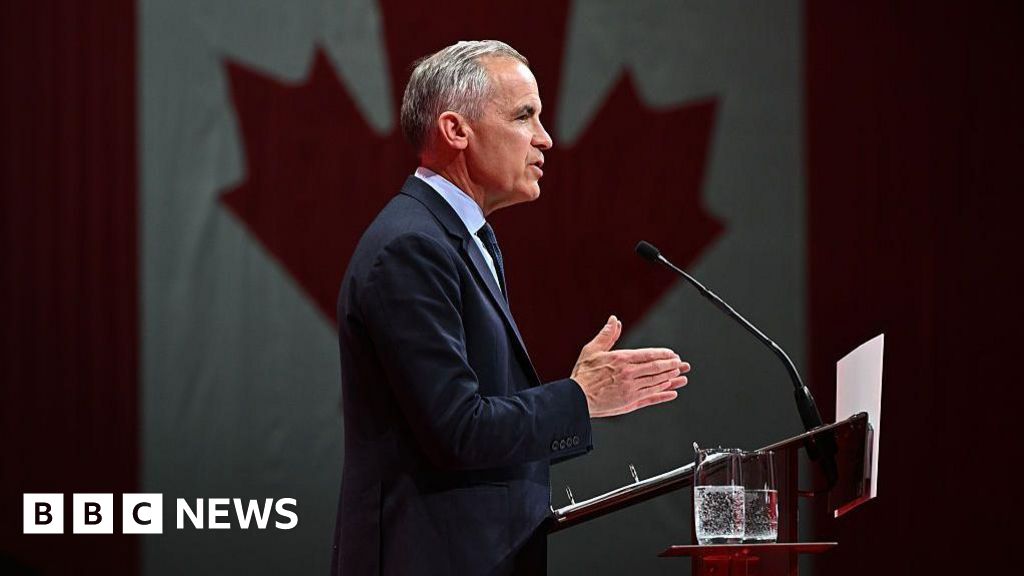For a week after a massive earthquake hit northeastern Japan on March 11, 2011, the Japanese Prime Minister Kan Naoto slept in his office. As he was trying to close his eyes, images of the devastating tsunami and the escalating nuclear accident raced through his mind. Over the next days, as nuclear meltdown fears mounted and the potential for mass casualties loomed, Kan began to contemplate evacuating the entire Tokyo metropolitan area including the Imperial Palace and state institutions. Despite the palpable sense of danger, or perhaps because of it, he kept this apocalyptic scenario for himself. “This situation was so grave I felt I had to use the utmost discretion when putting it into words,” he wrote in his memoir “My Nuclear Nightmare: Leading Japan through the Fukushima Disaster to a Nuclear-Free Future” (2017).
Kan’s recollections of the aftermath of the triple disasters contain a few visceral descriptions of the dangers he felt during those dramatic days. And like other leaders who faced grave danger before, his subjective account of what it felt like to experience danger is helpful in gaining a crucial perspective on leaders, threat perception, and international relations. Over the past years, I examined many such ‘danger-descriptions’ given by leaders embedded in different cultures and contexts. I read memoirs written by leaders and their close advisers, private letters leaders wrote to their colleagues or family members, diaries leaders kept while in office, as well as memoranda of declassified conversations leaders held with their counterparts. Drawing on these danger descriptions, as well as on a unique framework to describe the experience of language developed by Ray Jackendoff, I argue that leaders’ threat perception isn’t rooted in mere rational calculations of threat and risks (capabilities and intentions, probabilities and consequences) nor in ideology or in discrete emotions like fear or anxiety. Instead, leaders’ threat perception is better described using a set of mental structures which combine to create one’s “felt experience.” And while the specific content of the experience of danger might differ from one leader to another and from one danger to another, leaders likely share the qualia of danger experience (i.e., the forms in which consciousness presents itself: what this experience is like) as well as the structure of this experience (the space of possibilities ‘available’ for leaders when experiencing danger).
Crucially, leaders’ experience of danger isn’t static and often fluctuates as time unfolds. For example, recalling the minutes and hours after the September 11 attacks, then National Security Advisor Condoleezza Rice attests to a dynamic sense of danger. While she was ‘shaken’ to her ‘core’ in the immediate moments after she had learned about a second plane hitting the World Trade Center, for two days after 9/11 she operated in ‘a virtual state of shock’, with emotions and a renewed sense of action only emerging after she attended the National Day of Prayer and Remembrance service at National Cathedral. Thus, and in contrast to most literature on threat perception, which assumes threat perception is a continuant entity that is fixed, my point of departure is that leaders are not conscious of all dangers all the time and that the same dangers do not feel the same all the time either. I am therefore interested in incorporating threat perception as-an-occurrent into our analyses, asking how it feels for leaders to experience danger at a given moment in time and what might be the implications of a particular experience for belief-change, decision-making and crisis management.
The question of how leaders perceive/experience security dangers is important for theorists and practitioners of International Relations (IR) alike. Leaders’ perceptions and experience matter in world politics, even if they do not have full control over political outcomes all of the time. Threat perception too is a crucial element in the study and practice of International Relations, playing a vital role in theories of war, deterrence and compellence, alliances, and conflict resolution. And yet underpinning our current understanding of leaders’ threat perception in IR is an incomplete notion of human decision-makers as (ir)rational information processors that pays no attention to the role of experience in constructing a perception of danger at a given moment. Building on Alexander Wendt’s claim that ‘no model of human beings is complete that does not have room for the experience of being human, of what it is like to be you or me’, I develop and illustrate a framework with which scholars can explore what it is like for a leader to experience security danger at a given moment, i.e. what it might feel like for the leader, and how such experience is organised in the minds of leaders.
Beyond Rationality and psychology
For decades, scholars of International Relations (IR) have framed leaders as rational calculators, weighing the capabilities and intentions of adversaries. Alternatively, scholars interested in psychology have highlighted how ideology, identity, biases, beliefs, images, and emotional dispositions shape threat perception. But both rational and psychological perspectives miss a critical piece of the puzzle: the experience of danger. I argue that leaders’ perceptions are not static judgments but dynamic experiences that evolve over time, often fluctuating from moment to moment, with important consequences for international security. Drawing on linguistics (conceptual semantics), Buddhism (the notion of impermanence) and process metaphysics, as well as on previous work of IR scholars, I introduce a new theoretical framework—the “danger framework”—to describe how leaders experience threats and risks as they unfold. This framework focuses on the form danger takes in the consciousness of leaders as well as how the experience of danger is organised, thus paving the way for students and scholars to explore how such experience shapes leaders’ beliefs, decisions, and crisis-management.
Theoretical Core: The Danger Framework Explained
At the heart of my paper lies the following argument. First, the quale of danger is simulated harm. That is, when leaders face threats, risks, hazards – dangers of all kinds, their minds conjure imagery (linguistic or visual) involving the production of harm. This mental simulation, which in turn draws on two mental structures (the conceptual and spatial structures), provides the “content” of the experience of danger. However, simulated harm can’t be all there is to the experience of danger: a leader can conjure an image of enemy missiles falling in civilian centers—yet this danger may feel real or unreal, familiar or novel, controllable or not. If simulated harm was all there was to it – leaders would experience these dangers in the same way. This is why we need additional features to characterise how leaders experience danger. The framework identifies six primary features (“character tags”) and several sub-features that structure leaders’ experience of danger. I add a guiding question from the leader’s point of view to illustrate the features.
Reality Tag: Is the danger perceived to be ‘out there in the world’ or is it merely in my head? Coherence: Does this simulated harm feel meaningful in the sense that it “makes sense”, i.e., fulfills a clear pattern/trajectory/plan/goal, or meaningless? Familiarity: Is the danger posed new, or have I/we experienced it before? Volition: Is the danger self-generated, or does it feel like an intrusive thought? Control: Can I/we manage the threat, or does the danger seem beyond my/our control? Emotional Connection:(a) Valence: Is the danger negative or positive?
(b) Intensity: And how much does it matter – is it a minor disturbance or an existential crisis?
– Taboo: Do I wish to contemplate/communicate this danger to others or not?
These features of the danger experience can combine in different ways to structure leaders’ experience, with potential implications for belief change, decision-making, and crisis management.
To illustrate the framework, let me give one example within the context of how leaders change their beliefs about important aspects of the world. The example pertains to 2011 Japan and to the danger PM Kan experienced from the nuclear accident at the Fukushima nuclear power plant. Prior to 2011, Kan had been a supporter of the utility of nuclear power. Yet this experience of nuclear danger might have led him to re-evaluate his belief. In his words:
My experience of the nuclear accident that began to unfold on March 11 changed my thinking about nuclear power. I came to understand that a nuclear accident carried with it a risk so large that it could lead to the collapse of a country. I became convinced that what we had been calling ‘safe nuclear power’ could only be found through independence from nuclear power.
But what aspects of his experience have caused this change? Kan’s memoir offers some hints as it records that significant chain of events. The prologue begins with the following statement, in which both form (simulated harm) and feel (five character-tags, which I designate with [square brackets]) are evident:
I often recall the harsh conditions of that first week. From the time of the earthquake disaster on 11 March 2011, I stayed in the prime minister’s office complex and, when I was alone, napped in my disaster fatigues on a couch in the reception room located behind the office where I conducted my official duties. When I say that I ‘napped’, I was really just lying down and resting my body while my mind raced [no volition], thinking frantically about how to cope with the earthquake and tsunami [lack of coherence and of control], about the potential escalation of the nuclear accident [real, negative emotion connection] and whether it could be contained [lack of control]. I have no recollection of actually sleeping.
Notice how laden this opening paragraph of the memoir with traces of emotional connection, and how Kan reveals that his mind was involuntary racing during the first week after the disaster, as he was trying to make sense of it and of how to control the danger. Later in the memoir, Kan again comments on the events of the first week, confessing that: “As the prime minister, I felt painfully powerless [no control] and unprepared [unfamiliar] when I was unable to prevent the Fukushima nuclear accident from occurring [no control] and so many people from suffering.”
Kan’s experience of the danger posed by the nuclear accident can therefore be characterised by a strong sense of emotional connection as well as a lack of control, volition, and familiarity. And as we have seen, for several days he also avoided communicating the worst-case scenario of evacuating Tokyo to others, a sub-feature of the emotional connection: existential tag.
Previous work in IR argued that a change in beliefs occurs when a specific experience fulfils a set of three conditions: vividness/salience (similar to the feature of emotional connection), unambiguity (coherence), and surprise (familiarity). Yet as my interpretive textual analysis of Kan’s recollection of 11 March suggests, Kan’s danger experience of the nuclear accident was informed by emotional connection (valence, intensity and taboo), unfamiliarity, as well as a lack of control and volition. And if we accept Kan’s claim that his experience of the nuclear accident changed his thinking about nuclear power, then we might have uncovered additional pathways for change in beliefs. Concretely, the feeling of lack of control over the danger, the feeling of lack of volition, where danger images intrude on the leader’s mind, as well as the sense of taboo on communicating this danger to others might have also played a role in Kan’s change of heart.
A New Lens for International Relations
The danger framework introduces a new vocabulary for IR scholars:
Simulated Harm: The content of danger-experience, often involving mental imagery in predominantly linguistic form (as when one broadcasts the sentence ‘nuclear reactor meltdown is imminent’ in their mind), predominantly visual content (as when one visualises mass evacuation of the capital city in their mind), or both. My notion of ‘simulated harm’ is similar to Dominic Johnson and Dominic Tierney’s notion of ‘negative phenomena’, and to Trine V. Berling et al. notion of ‘unwanted futures’, although it is both more restrictive than the former as it focuses on harm and broader than the latter as it allows for simulated harm that has taken place in the past, as when one relives past harm again and again.
Character Tags: Features that shape how danger feels—is it real or imagined? Familiar or novel? Is the danger self-generated or intruding on my mind? Within or beyond our control? Is the danger positive or negative? Does the threat feel existential, or are we safe? Do I wish to contemplate it/share it with others?
By incorporating these dimensions, I challenge the dominant rational and psychological narratives in threat perception scholarship, urging scholars to pay closer attention to the experience of leaders, offering a new framework from which to explore how the psychological underpinnings of leaders’ minds intersect with their beliefs about the world, their decisions, and ways of managing crises. By introducing the concept of simulated harm and by identifying the features of felt experience, I also lay a bridge over to the discipline of linguistics, and specifically to the subfield of conceptual semantics. Spearheaded by Ray Jackendoff, conceptual semantics seeks to describe the range of human thoughts that can be conveyed in language – an overall framework for the theory of meaning – and to further integrate this theory into linguistics, philosophy of language, and cognitive science. Why linguistics? Because of all cognitive sciences, it is only linguistics that has systematically investigated the content of mental structures that underlie human capacities such as language, as opposed to investigating ‘the machinery’ involved in processing mental structures (working memory, attention, and learning). And why conceptual semantics? Because of all strands of linguistics, it is conceptual semantics which maintains strong links with cognitive neuroscience and evolutionary psychology, thus providing a firm grounding for the study of the various aspects of the human brain/mind, as well as for the study of leaders in international relations.
The danger framework is an invitation to rethink how we study international security. For those intrigued by the intersection of psychology, linguistics, and global politics, this work offers several insights and raises compelling questions about the nature of leadership in times of danger. Dive into the full text to explore how this innovative framework can reshape the way we understand threat perception in IR.
Figures
Figure 1 – U.S. National Security Advisor Condoleezza Rice in the President’s Emergency Operations Center (PEOC), September 11, midnight. The National Archives, USA. Retrieved from Wikimedia Commons. Direct link: https://commons.wikimedia.org/wiki/File:Vice_President_Cheney_with_Condoleezza_Rice_in_the_President%27s_Emergency_Operations_Center_(PEOC)_(19728962388).jpg.

Figure 2 – Prime Minister Kan surveys the disaster area in Northeast Japan from above, March 12, 2011. Copyright Cabinet Public Relations Office, Cabinet Secretariat, Japan. Used with permission. Direct link: https://www.kantei.go.jp/jp/kan/actions/201103/12genchi.html#inner_content2

Figure 3 – Japanese Prime Minister Naoto Kan speaks during a news conference at his official residence in Tokyo, March 25, 2011. Copyright Cabinet Public Relations Office, Cabinet Secretariat, Japan. Used with permission. Direct link: https://www.kantei.go.jp/jp/kan/actions/201103/25message.html#inner_content1.


 Movie
Movie 2 months ago
159
2 months ago
159 




![Presidents Day Weekend Car Sales [2021 Edition] Presidents Day Weekend Car Sales [2021 Edition]](https://www.findthebestcarprice.com/wp-content/uploads/Presidents-Day-Weekend-car-sales.jpg)



 English (United States)
English (United States)